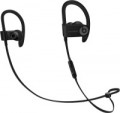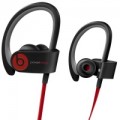Range
Range of wireless-capable headphones (see "Connection type").
When evaluating the range, it should be taken into account that this parameter is rather conditional and the actual range may differ slightly from the claimed one (usually in a smaller direction). So, when connecting via a radio channel, the range is indicated for perfect conditions — without interference and obstacles in the signal path. For Bluetooth models, the range also depends on the power of the Bluetooth module in the device to which the “ears” are connected. And the effectiveness of the IR channel may be reduced in hot weather or in bright sunlight. So when choosing according to this indicator, it's ok to take a certain margin.
On the other hand, there are two points worth noting. Firstly, in general, the specified range accurately describes the capabilities of the headphones, and it is quite possible to evaluate and compare different models with each other. Secondly, even in the most modest wireless “ears”, the communication range is about
8–10 m,
11–20 m is considered an average, and a fairly large number of devices can operate at distances of
tens and even hundreds of metres. So paying attention to the range makes sense mainly in cases where you plan to move away from the signal source at a considerable distance — from 5 m or more — or listen to sound through walls.
Operating time (music)
The declared operating time of headphones with autonomous power supply (see above) when listening to music on a single battery charge or a set of batteries.
As a rule, the characteristics indicate a certain average operating time in music listening mode, for standard conditions; in practice, it will depend on the intensity of use, volume level and other operating parameters, and in models with replaceable batteries - also on the quality of specific batteries. However, based on the stated time, you can fairly reliably assess the autonomy of the selected headphones and compare them with other models. As for specific values, relatively “short-lived” devices have a battery life
of up to 8 hours, a figure of
8 – 12 hours can be called quite good,
12 – 20 hours – very good, and in the most “long-lasting” headphones the operating time can
exceed 20 hours.
Weight
The total weight of the headphones; for true wireless models (see "Cable Type"), the weight of each individual earbud is listed.
This parameter is directly related to the design (see above) and some features of the functionality. Thus, the mentioned true wireless devices are very light, their weight
does not exceed 25 g. More traditional in-ears and in-ears can be noticeably heavier,
up to 50g for in-ears and up
to 100g for most in-ears. Overhead models, for the most part, are quite massive: among them there are many models weighing
200 – 250 g,
250 – 300 g and even
more than 300 g. It should be noted that a significant weight for false ears is often not a disadvantage, but an advantage: it allows them to stay on the head more securely, creates an impression of solidity and reliability, and most often does not create significant inconvenience.
In box
Among the equipment, it is worth highlighting
silicone and
polyurethane tips, relevant for in-ear headphones,
additional fixation nozzles and behind-the-
ear arms for better attachment in the ear,
interchangeable ear pads,
additional cable,
dongle,
aircraft adapter,
case / case and
docking station. There are also other accessories. More details about them:
- Silicone tips. Replaceable silicone tips used in in-ear headphones. Usually, several nozzles of different sizes are supplied in the kit, which allows you to adjust the headphones to a specific user. The practical advantages of silicone are softness, durability, general convenience and at the same time low cost.
- Polyurethane nozzles. Replacement tips for in-ear headphones made of foamed polyurethane. This material is somewhat more expensive than silicone, it requires regular cleaning and has a shorter service life - including due to deformation as it wears. On the other hand, polyurethane is ideal in terms of acoustics; it is these tips that are considered the best choice for lovers of in-ear “ears” with high-quality sound.
- Ear hooks. Removable devic
...es designed to additionally secure each earpiece to the ear. Note that such devices should not be confused with behind-the-ear mounts (see above). The main difference is that the arms are used exclusively in some models of in-ear headphones and earbuds as an additional option. In other words, you can wear such headphones without a bow, while the behind-the-ear mount is usually made non-removable and, in principle, you can’t do without it.
— Nozzles of additional fixation. Auxiliary caps for a tighter fit of the in-ear headphones. They are used to provide better fixation of headphones during sports or provide additional volume to users with a large auricle.
- Replaceable ear pads. Comes with interchangeable ear tips. In general, the ear pads are the part with which the headphones come into contact with the listener's ears. In full-size and on-ear headphones, they are soft pads on the inside of the cups.
— Case (case) / cover. Covers are usually called soft rag bags, they protect the "ears" mainly from pollution and take up a minimum of space. Cases are made of hard materials, they are a little more bulky, but they protect well from shock, pressure and contact with sharp objects. In any case, the complete case or case is optimally suited for the headphones and is more convenient than an impromptu protective casing.
- Charging case. Case - a case made of hard material - simultaneously playing the role of a charger. This feature is very popular on true wireless models (see "Cable Type"). The charging case usually has its own battery and the headphones are already charged from this battery; this design provides additional convenience in several moments at once. Firstly, the case, in fact, also performs the function of a power bank - an autonomous power source; the capacity of such a “power bank” may be different, but it is usually enough for several full charges of the “ears” (for more details, see “Capacity of the case”). Secondly, the ability to charge the headphones directly in the case reduces the risk of losing them. Thirdly, the charging procedure itself is quite convenient - just connect the cable to the case.
- Dock station. Stationary stand with the possibility of placing headphones and contacts for charging them. Also, docking stations are often used to transfer the sound track to headphones - they are connected directly to the sound source via a wire, and the sound is transmitted to the ears wirelessly within a certain radius of action.
— Clip for carrying. A clip designed to fasten the wire to a pocket, collar, lapel of clothing, etc. It provides additional convenience: thanks to the clip, the wire does not hang out, the likelihood of touching it with careless movement or catching on the surrounding object is reduced.
- Additional cable. An additional cable provided in addition to the main one may have different features and specializations. So, complete cables can vary in length, connector type, wire type, additional equipment (microphone, volume control), etc. These details should be specified separately in each case. Here, we note that almost all headphones with this configuration have a detachable cable (it makes sense to supplement a non-detachable wire with an extension cable, and it is considered a separate accessory - see below).
- Extension. A type of additional cable designed solely to increase the overall length of the wire. Due to the extension cord, you can adjust the headphones to the specifics of the situation: for example, “build up” the cable if you need to switch from a laptop to a TV or a stationary audio system.
— Airplane adapter. Dedicated headphone adapter for use with modern airliner entertainment systems. In such systems, a special way of connecting headphones is used - through two 3.5 mm jacks (and we are talking about classic "ears", without a microphone). Models with a traditional single 3.5 mm plug can only be connected to this output through an adapter; such adapters may initially be included in the delivery.
- Windproof microphone. Devices in the form of a foam rubber or "shaggy" lining on the headphone microphone capsule. Cut off unnecessary ambient noise and minimize the effect of direct exposure to air currents on the microphone, which can cause interference in speech transmission.
— Dongle. The dongle is used to simplify the organization of connecting wireless headphones to other devices. In fact, this is a radio transmitter (less often a Bluetooth transmitter) that non-contactly broadcasts sound to headphones from a connected device.
This list is not exhaustive and may include other optional items.
